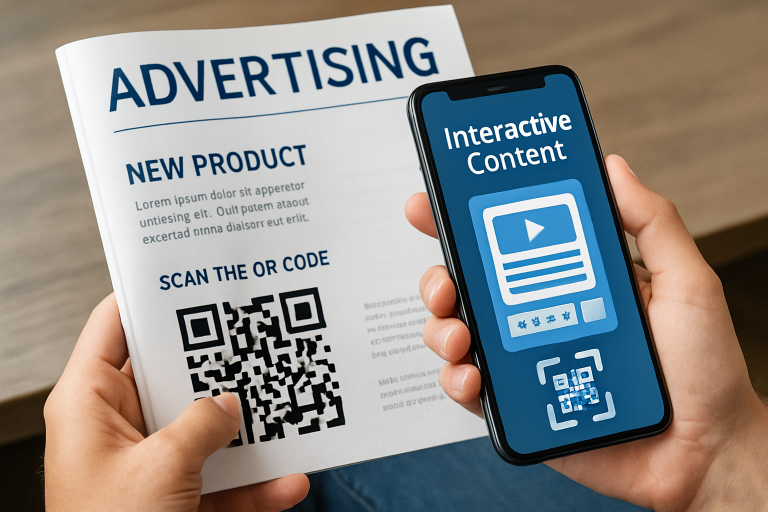In a rapidly evolving marketing landscape dominated by digital noise, creative print advertising continues to carve out its own influential space. Innovative brands know that print is far from obsolete; in fact, it often delivers a tactile, memorable experience that purely digital campaigns can’t match. The true power of print lies in blending time-honored strategies with cutting-edge technology to create immersive, multi-layered campaigns that leave a lasting impression. Partnering with an expert targeted print advertising agency gives brands the edge they need by providing insights, creative direction, and the technical know-how to seamlessly merge tradition with innovation for maximum impact.
Today’s print ads are far more sophisticated than just ink on a page—they’re carefully crafted bridges to the digital world, sparking interactions, building brand loyalty, and encouraging authentic connections. The limitations of traditional print no longer constrain marketers who approach their campaigns with a fresh, creative mindset. Instead, they’re turning static advertisements into dynamic conversations and experiences that consumers genuinely remember, enhancing overall marketing results exponentially.
Integrating Digital Elements into Print Ads
The magic of great print advertising lies in its ability to foster direct, human engagement—yet its effectiveness is multiplied when digital elements are strategically embedded. Rather than viewing print and digital as competing channels, leading brands recognize the value in uniting them. One highly effective tactic is the clever use of QR codes, near-field communication (NFC) tags, or unique personalized URLs within print pieces. These tools create a seamless path for consumers to transition from the physical world to the digital sphere, making it effortless to engage further—whether it’s by watching a demonstration video, unlocking an exclusive promotion, or making a quick purchase online.
Additionally, such integration allows for advanced tracking and analytics, giving marketers invaluable data about which creative executions drive the most engagement and conversions. This constant feedback loop enables real-time adjustments for optimal results. Brands also amplify their print campaigns by tying them to digital contests, hashtag campaigns, or social media promotions—encouraging readers to share their experiences and fostering word-of-mouth growth. For instance, a catalog can prompt customers to participate in a photo challenge online in exchange for rewards, seamlessly extending the life of the print message into the digital realm.
Embracing Augmented Reality (AR)
Augmented reality (AR) technology is reshaping what consumers expect from print advertising, offering marketers an unprecedented opportunity to blend the tangible with the virtual. Through the simple act of scanning an AR-enabled print ad with a smartphone or tablet, readers can unlock a treasure trove of interactive content—think 3D product models, rich animation layers, mini-games, or virtual “try before you buy” experiences right from the ad’s page. This not only creates a powerful “wow” factor but also delivers educational value and entertainment in a way traditional print alone could not. Pioneering brands like IKEA are perfect examples, with catalogs that let potential buyers virtually place furniture inside their own homes, fostering brand trust and confidence at the critical decision-making moment. AR helps demystify complex products, personalize the brand experience, and exponentially increase ad recall. As AR tools become mainstream and more user-friendly, they open the door for brands of all sizes to delight and surprise customers, making their print materials truly stand out.
Personalization in Print Advertising
The contemporary consumer expects brands to recognize and respond to their unique preferences—and print advertising is rising to the challenge with data-driven, individualized campaigns once only possible online. Brands are harnessing customer relationship management (CRM) data, purchase behavior, and demographic insights to send hyper-targeted print materials. Imagine receiving a postcard customized with your name, referencing your previous purchases, or offering recommendations based on your interests. This kind of tailored approach not only captures attention, but also forges a deeper, more genuine bond between brand and consumer. Research shows that personalized print campaigns dramatically outperform generic blasts, with better engagement rates, stronger loyalty, and higher conversion. It’s now cost-effective to print one-of-a-kind mailers at scale using variable data printing and other advanced technologies. For brands looking to build long-term customer trust and loyalty, investing in personalization is not just an option—it’s a necessity. When every consumer feels seen and valued, every printed message gains more meaning and influence.
Sustainable Practices in Print Advertising
As environmental awareness becomes a defining factor in consumer choices, businesses that demonstrate a real commitment to sustainability are seeing tangible rewards—not just in goodwill, but in brand preference and loyalty too. The move to sustainable print practices isn’t simply about compliance; it’s a statement of values that resonates deeply with today’s audiences. Simple yet powerful steps—such as opting for recycled or responsibly sourced paper, soy-based or vegetable inks, and working with green-certified printers—signal a brand’s genuine concern for the planet. Savvy brands embed sustainability into both their advertising process and message, from highlighting eco-friendly certifications to sharing their environmental story within the ad’s call to action. This transparency builds credibility and trust, especially among eco-conscious demographics, and sets a standard in the industry. Prioritizing sustainability not only reduces your ecological footprint but positions your business as a thoughtful leader and partner in your customer’s responsible lifestyle choices.
Leveraging Storytelling and Emotional Appeal
At the very heart of outstanding print advertising is the art of storytelling. Nothing cuts through the clutter and fosters connection quite like a compelling narrative or authentic emotional appeal. Print media, with its tactile and focused presence, is an ideal format to tell deeper, richer stories—whether it’s the journey of a loyal customer, the heritage of the brand, or the transformative impact of a mission-driven product. Story-driven ads are far more memorable and impactful than those that rely solely on features or discounts.
Creative use of visuals, thoughtful headlines, and engaging copy boost the emotional resonance of your ad. For example, a campaign that brings to life a customer’s transformational experience or a community’s benefit from your product can inspire action and devotion long after the initial encounter. Print’s ability to showcase stories with elegance and permanence ensures your message lasts, forging bonds that transcend the fleeting attention often seen online.
Conclusion
Creative print advertising thrives when rooted in modern strategies that combine the tactile strengths of traditional media with the stimulating interactivity of digital technology. By integrating clickable touchpoints, embracing the power of personalization, committing to sustainability, and crafting authentic narratives, brands elevate print from a passive medium to an unforgettable experience. Collaborating with a knowledgeable targeted print advertising agency ensures your campaigns break through the noise, delivering remarkable engagement and driving real results in a multi-channel world.

